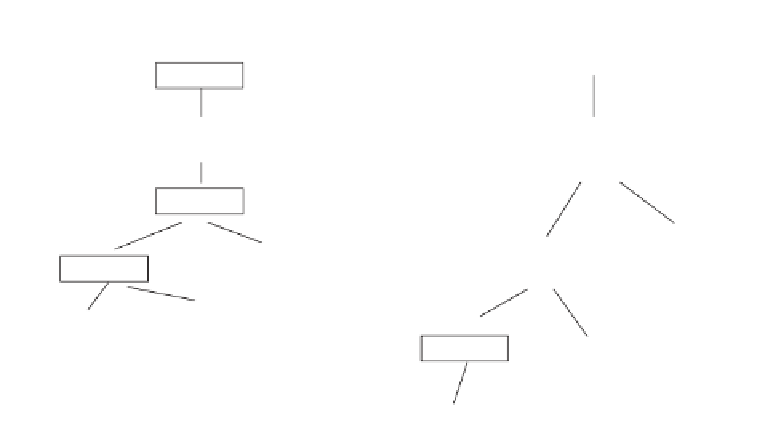Database Reference
In-Depth Information
ServiceCode, ServiceDesc
ServiceCode, ServiceDesc
PROJECT
1
2
PROJECT
SERVICE.ServiceCode
BILLING.ServiceCode AND
=
ServiceCode
PatientNo
224466
=
JOIN
PRODUCT
PatientNo
SERVICE
SERVICE
PRODUCT
JOIN
BILLING
PatientNo
PATIENT
SELECT
BILLING
PATIENT
Figure 13-19
Sample query: query tree versions.
database system. We covered physical design in sufficient detail in Chapter 12. Now
you are ready for implementation and deployment of the database system.
In the deployment phase, you make the database system ready and available to
users. The final database system must contain data to satisfy the information require-
ments as defined in the requirements definition phase and then used to perform the
logical and physical design.
We will now review the major tasks for deployment. Access to the database
through application programs must be established. Storage space for files must be
allocated. Data dictionary entries must be made. Database files must be populated
with initial data. Let us highlight the major tasks and also discuss special issues relat-
ing to implementation and deployment of the database system.
Deployment Tasks
Let us continue from the end of the physical design step of the design phase. As
you will note, the design has been verified and now you are ready to implement the
physical design as the database system. We will list and highlight the major deploy-
ment tasks. In later subsections, we will also consider special issues relating to the
deployment phase.
Here is a list of major deployment tasks:
Install DBMS.
As you know, the physical design took the target or selected
database management system into consideration. Now, set all the initial parameters
and complete the installation of the selected DBMS.
Build data dictionary.
Using the data definition facility provided in the selected
DBMS—usually a version of SQL—create the data dictionary entries to define the
relations, attributes, key constraints, indexes, and other constraints.








Search WWH ::

Custom Search